#39: Create a Progression of Knowledge Discovery
In lesson 37, we talked giving your characters things to discover, and how this compels both the characters and the reader forward in the story. In lesson 38, we discussed five ways to create these “information gaps”—gaps between what we know and what we want to know.
Yet it’s not enough to simply have a number of information gaps and discoveries in a story: unless you’re using an episodic structure, larger discoveries should often be connected to each other and build on each other.
But how do you create this progression of knowledge discovery?
Let’s consider how Jane Austen does it, first in the novel Northanger Abbey, and then in Pride and Prejudice.
Murder? Imprisonment? Or Tragic Death?
The first time that Catherine Morland hears of Mrs. Tilney, Mrs. Allen is attempting to establish the basic facts of Mrs. Tilney’s existence (or lack of existence):
“And are Mr. and Mrs. Tilney in Bath?” [Catherine asked Mrs. Allen.]
“Yes, I fancy they are, but I am not quite certain. Upon recollection, however, I have a notion they are both dead; at least the mother is; yes, I am sure Mrs. Tilney is dead, because Mrs. Hughes told me there was a very beautiful set of pearls that Mr. Drummond gave his daughter on her wedding-day and that Miss Tilney has got now, for they were put by for her when her mother died.”
Later, when Catherine is visiting the Tilney estate, Northanger Abbey, she learns more of the facts from her friend, Miss Eleanor Tilney, and asks questions which might help her define these facts (label them in ways to help her understand them) and determine what these facts indicate or mean about Mrs. Tilney’s type of death (was it truly a sudden death? Or was wrongful behavior involved?)
Catherine had never heard Mrs. Tilney mentioned in the family before, and the interest excited by this tender remembrance showed itself directly in her altered countenance, and in the attentive pause with which she waited for something more.
“I used to walk here so often with her!” added Eleanor; “though I never loved it then, as I have loved it since. At that time indeed I used to wonder at her choice. But her memory endears it now.”
“And ought it not,” reflected Catherine, “to endear it to her husband? Yet the general would not enter it.” Miss Tilney continuing silent, she ventured to say, “Her death must have been a great affliction!”
….“Was she a very charming woman? Was she handsome? Was there any picture of her in the abbey? And why had she been so partial to that grove? Was it from dejection of spirits?”—were questions now eagerly poured forth; the first three received a ready affirmative, the two others were passed by; and Catherine’s interest in the deceased Mrs. Tilney augmented with every question, whether answered or not. Of her unhappiness in marriage, she felt persuaded. The general certainly had been an unkind husband. He did not love her walk: could he therefore have loved her? And besides, handsome as he was, there was a something in the turn of his features which spoke his not having behaved well to her.
“Her picture, I suppose,” blushing at the consummate art of her own question, “hangs in your father’s room?”
No; it was intended for the drawing-room; but my father was dissatisfied with the painting, and for some time it had no place. Soon after her death I obtained it for my own, and hung it in my bed-chamber—where I shall be happy to show it you; it is very like.” Here was another proof. A portrait—very like—of a departed wife, not valued by the husband! He must have been dreadfully cruel to her!
Catherine attempted no longer to hide from herself the nature of the feelings which, in spite of all his attentions, he had previously excited; and what had been terror and dislike before, was now absolute aversion. Yes, aversion! His cruelty to such a charming woman made him odious to her. She had often read of such characters, characters which Mr. Allen had been used to call unnatural and overdrawn; but here was proof positive of the contrary.
Catherine continues to gather knowledge, such as the facts that neither of the Tilney children were there when Mrs. Tilney died, and that Mrs. Tilney’s room are off-limits. From these discoveries, Catherine determines a course of action (or policy) to follow: to go, when alone, and search Mrs. Tilney’s rooms. When she does so, she discovers more facts (the lack of evidence of ill-treatment) and new definitions and understandings of the quality or nature of Mrs. Tilney’s death from her son, Henry Tilney. Ultimately, she realizes that all of her suspicions around Mrs. Tilney’s death were due to an overactive imagination.
These discoveries build on each other and create a progression across multiple chapters, a progression which interferes with her romantic interest in Henry Tilney, and which teaches Catherine more about herself and her relationship with others.
Northanger Abbey is not limited to this single progression of discoveries; in the lesson on character arcs, I discussed the progression (with accompanying setbacks) of Catherine coming to understand John Thorpe’s character. Often a novel will have a number of discovery progressions, sometimes at different points in time, and sometimes layered concurrently.
A Framework for Understanding These Progressions: Stasis Theory
Aristotle, Hermagoras, Quintilian, Cicero, and others developed a theory that we now call stasis theory.
Stasis theory is a way to understand the different spaces where argument can occur: in other words, the different spaces where people can disagree about knowledge. This can be a useful theory if you’re writing an argument between two characters, but it also can help us understand the different categories of information gaps that can occur.
In stasis theory, there are four main places where arguments occur:
As I define each of these different stases, we’ll consider a progression of discovery from Pride and Prejudice.
Fact
Often, the characters must determine the facts. What happened? What caused something? What actually occurred?
While facts seem non-debatable, it’s actually very common to have extensive debates on the facts, and it can take much effort to acquire them (and to get people to agree upon them).
A Fact Information Gap in Pride and Prejudice
- What happened between Mr. Darcy and Mr. Wickham? What caused their cold greeting?
Definition
Once you have facts, you must categorize and define them. Did what happen cause a problem or a conflict? If so, what type of problem is it? How are the facts related and what connects them?
A Definition Information Gap in Pride and Prejudice
- As Elizabeth learns more about Mr. Darcy and Mr. Wickham’s interconnected pasts, she attempts to find a satisfactory definition to explain them. What she initially discovers leads her to define what happened as a disregard of the elder Mr. Darcy’s wishes and a removal of Mr. Wickham’s intended inheritance.
Quality
Following discoveries related to definition, judgments about quality are often made. What is the nature of what happened? Is it good or bad? Can we pass a judgment on a character, event, or situation?
A Quality Information Gap in Pride and Prejudice
- Elizabeth decides what she has discovered indicates a severe mistreatment of Mr. Wickham by Mr. Darcy. She has made a judgment on quality.
- Then, after she rejects Mr. Darcy’s proposal, he informs her of additional facts which lead her to change her definitions of the situation and her judgments on quality (Mr. Withrow squandered his inheritance and attempted to elope with the young Miss Darcy—clearly, the blame and fault lies with him).
Procedure
Once quality has been determined comes the question of procedure: what should be done? What is the best way to deal with this information gap or problem? Will the chosen procedure be effective?
A Procedure Information Gap in Pride and Prejudice
- Prior to the start of the novel, Mr. Darcy, upon learning of Mr. Wickham’s true nature, rescued his sister and determined to keep the situation secret in order to protect his sister.
- Once Elizabeth learns of the true nature of events, she agrees with his procedure: keep what happened a secret. She considers changing her procedure when she returns home, but decides not to.
- For many chapters, this procedure seems to be a good one. But then Elizabeth’s sister Lydia elopes with Mr. Wickham, and it becomes clear that the procedure did not lead to the intended results. Which leads to a new question: what should now be done? Ultimately, Mr. Darcy decides to solve the problem by forcing Mr. Wickham to marry Lydia.
Bonus resources on stasis theory: Silva Rhetoricae on Stasis Theory; Purdue Writing Lab on Stasis Theory.
Creating a Progression of Knowledge Discovery
Sometimes a series of discoveries in a novel are sequenced so that a character moves directly from fact to definition to quality to procedure. At other times, as in Northanger Abbey and Pride and Prejudice, certain types of discoveries are repeated or returned to again and again. And in other stories, a series of discovery may not need a certain type of information gap.
Yet regardless of what exactly the progression looks like, creating a progression helps create movement and a feeling of continuity in the story. Often these key discoveries (such as Mr. Wickham’s true nature) become important for key plot events later (Mr. Wickham running off with Lydia), and by creating a progression it creates better foreshadowing and more satisfying pay-offs for the reader.
Exercise 1:
While all genres of fiction have great examples of using a progression of discovery, one genre that is particularly known for it is the mystery genre. Watch a mystery film or read a mystery novel, and track different discoveries. What is revealed when? Which stases are used? How is a progression created, and how do these discoveries relate to and build on each other?
Exercise 2:
Choose an event or topic that involves disagreement. This could be a current/recent event (for example, something in the news), or something from your own life.
For this topic, consider how one group of people would define the facts, and how another group might consider the facts differently. Then consider how their perspectives would differ on definition, quality, and procedure, and fill out the following chart.
| Perspective 1 | Perspective 2 | |
| Fact | ||
| Definition | ||
| Quality | ||
| Procedure |
How could understanding these different perspectives create plot conflict if this event or topic was included in a fictional story?

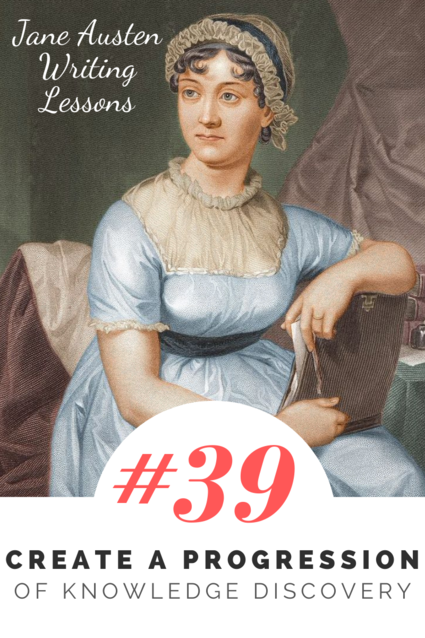

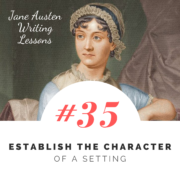
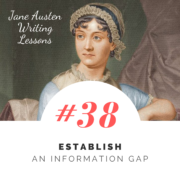
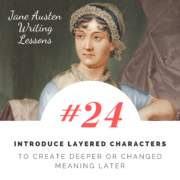
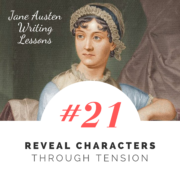
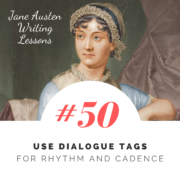
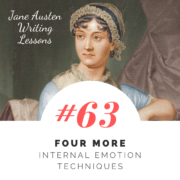


Leave a Reply
Want to join the discussion?Feel free to contribute!